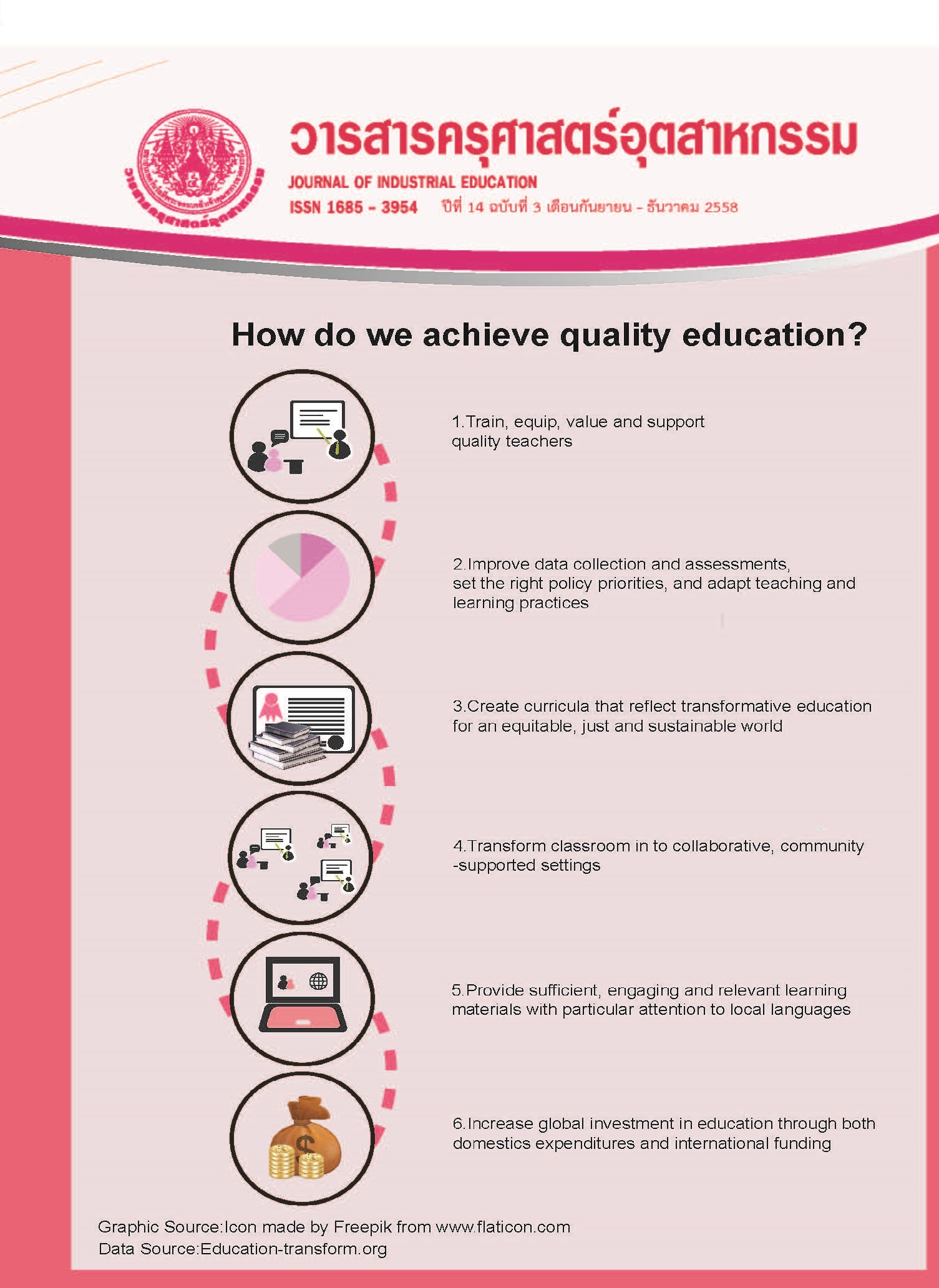การศึกษาและพัฒนาผลิตภัณฑ์ร่วมสมัยจากเศษกระจูด
Main Article Content
บทคัดย่อ
การวิจัยครั้งนี้ มีวัตถุประสงค์ 1) เพื่อศึกษากระบวนการแปรรูป และการสร้างผลิตภัณฑ์จากเศษกระจูด 2) เพื่อออกแบบผลิตภัณฑ์จากเศษกระจูด ให้มีมูลค่าเพิ่มในรูปแบบผลิตภัณฑ์ร่วมสมัย 3) เพื่อประเมินความพึงพอใจต่อผลิตภัณฑ์จากเศษกระจูดจากผู้ผลิต ผู้จำหน่าย และผู้สนใจผลิตภัณฑ์หัตถกรรม กลุ่มตัวอย่างที่ใช้ในการวิจัย คือ กลุ่มผู้ผลิตหัตถกรรมจักสานกระจูดชุมชนทะเลน้อยจำนวน 103 คน ผู้จำหน่ายหัตถกรรมจักสานกระจูด ในตลาดชุมชนทะเลน้อย จำนวน 28 คน และผู้ที่ สนใจผลิตภัณฑ์หัตถกรรมจักสานกระจูด จากประชาชน และนักท่องเที่ยวภายในอุทยานนกน้ำทะเลน้อย จำนวน 375 คน ได้มา โดยสุ่มตัวอย่างอย่างง่าย (Simple Random Sampling)
ผลการวิจัย ผลการประเมินผลิตภัณฑ์นาฬิกา แบบที่ 2 มีความพึงพอใจระดับมากที่สุด ( = 4.00) ผลการประเมินผลิตภัณฑ์อุปกรณ์สำนักงาน แบบที่ 1 มีความพอใจระดับมาก (
= 4.47) ผลการประเมินผลิตภัณฑ์ลวดลายพื้นโต๊ะ/เก้าอี้ แบบที่ 3 มีความพึงพอใจระดับมาก (
= 4.43) ผลการประเมินผลิตภัณฑ์กระถางต้นไม้ แบบที่ 1 มีความพึงพอใจระดับมากที่สุด (
= 4.00) สรุปได้ว่าการออกแบบผลิตภัณฑ์ร่วมสมัยจากเศษกระจูด 4 ชิ้นงาน กลุ่มตัวอย่างมีความพึงพอใจต่อผลิตภัณฑ์ร่วมสมัยจากเศษกระจูด ในด้านการออกแบบ (
= 4.87) และความพึงพอใจด้านคุณภาพของผลิตภัณฑ์ (
= 4.86)
สรุปโดยภาพรวมจากความคิดเห็นและคำแนะนำพบว่า การศึกษาและพัฒนาผลิตภัณฑ์ร่วมสมัยจากเศษกระจูดเป็นผลิตภัณฑ์ ร่วมสมัยจากเศษกระจูด ทั้ง 4 ชิ้นนี้ มีความเหมาะสมในการออกแบบและพัฒนาผลิตภัณฑ์ร่วมสมัย จากเศษกระจูด โดยมีปัจจัยทั้ง 5 ด้านประกอบด้วย ปัจจัยด้านการออกแบบผลิตภัณฑ์ร่วมสมัย ปัจจัยด้านคุณค่าทางจิตใจ ศิลปะพื้นบ้าน ปัจจัยด้านการใช้สอย ปัจจัยด้านต้นทุนของผลิตภัณฑ์ และปัจจัยด้านการเพิ่มมูลค่า
Article Details
"ข้อคิดเห็น เนื้อหา รวมทั้งการใช้ภาษาในบทความถือเป็นความรับผิดชอบของผู้เขียน"
References
Beuakwan, B., et al. 2011. Development of Bulush Residue for Health Care Products Using Local Wisdom. Community Wisdom College Thaksin University.
[2] วัชรินทร์ จรุงจิตสุนทร. 2548. หลักการออกแบบและแนวคิดการออกแบบผลิตภัณฑ์. กรุงเทพฯ : แอ๊ปป้าพริ้นติ้งกรุ๊ป.
[3] วัฒนะ จูฑะวิภาต. 2545. ศิลปะพื้นบ้าน. กรุงเทพฯ: สิปประภา.
[4] ศิริพรณ์ ปีเตอร์. 2550. มนุษย์และการออกแบบ.กรุงเทพฯ : โอเดียนสโตร์.
[5] มณฑลี ศาสนนันทน์. 2550. การออกแบบผลิตภัณฑ์ เพื่อการสร้างสรรค์นวัตกรรมและวิศวกรรมย้อนรอย. กรุงเทพฯ: สำนักพิมพ์แห่งมหาวิทยาลัยธรรมศาสตร์.
[6] ชูศักดิ์ เดชเกรียงไกรกุล และนิทัศน์ คณะวรรณ. การตลาด 1 ตำบล 1 ผลิตภัณฑ์ และธุรกิจ SMEs.กรุงเทพฯ : ซีเอ็ดยูเคชั่น.
[7] ธีระชัย สุขสด. 2544. การออกแบบผลิตภัณฑ์อุตสาหกรรม. กรุงเทพฯ: โอเดียนสโตร์.
[8] ชวลิต เปี่ยมวาณี ปริยาภรณ์ ตั้งคุณานันต์ และจิระเสกข์. 2554. ความพึงพอใจของผู้บริโภคที่มีต่อส่วนประสมการค้าปลีกในไฮเปอร์มาร์เก็ตในเขตจังหวัดปทุมธานี. วารสารครุศาสตร์อุตสาหกรรม. 10(3), น. 115-128.
Piamwanee, Ch. Tangkunanun, P.and Sake, J. 2011.Customer Satisfaction Towards Retailing Mix of Hypermarket in Pathumthani Province. Journal of Industrial Education. 10(3), p. 115-128.

